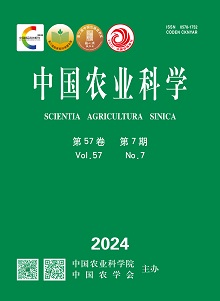【Objective】The study investigated the impact of salicylic acid (SA) priming on the germination vigor and physiological response of rice seeds under low temperatures. It aimed to reveal the expression patterns of genes related to abscisic acid (ABA) and gibberellin (GA) metabolic pathways as well as cell wall relaxation genes by SA priming. This research provided a theoretical basis for the study of rice seed germination at low temperatures.【Method】Using indica three-line hybrid rice Taifengyou 208 seeds as materials, the effects of SA on seed germination vigor and physiology responses under low temperature were analyzed through seed priming treatment, and the expression patterns of genes related to ABA, GA and expansin in response to SA were analyzed by qRT-PCR.【Result】Low temperature (15 ℃) significantly delayed the germination process of rice seeds. In seeds germinated at low temperatures for one day, the endogenous SA concentration was 1.7 times higher than that at normal temperatures (28 ℃). However, for five-day-old seedlings, the SA concentration under low temperature was only 0.6% of that at normal temperatures. SA could effectively enhanced germination vigor of seeds at low temperature, with the most significant effects observed at 2 000 μmol·L-1 SA. This concentration significantly increased the germination index, vigor index, shoot length, root length, fresh weight, and dry weight of seeds under low temperature conditions. Notably, the vigor index was three times that of non-primed seeds (CK1) and two times that of water-primed seeds (CK2). In terms of physiological indexes, SA priming increased the contents of soluble sugar, proline and active oxygen, enhanced the activities of total amylase, β-amylase, superoxide dismutase (SOD) and catalase (CAT), and decreased the content of malondialdehyde (MDA). Compared with CK1, 2 000 μmol·L-1 SA decreased the ABA content by 79%, and increased the IAA and GA1 contents by 32.2% and 2.66 times, respectively. In terms of gene expression, the expression levels of ABA synthesizing genes OsNCED2 and OsNCED3 were decreased by 94.26% and 90.24% compared with CK1 in seeds primed by 2 000 μmol·L-1 SA, respectively, whereas the expression levels of ABA decomposing genes OsABA8’ox2 and OsABA8’ox3 were 5.9 and 3.9 times higher than that of CK1, respectively. Compared with CK1, SA priming significantly upregulated the expression of GA synthesizing genes OsCPS1, OsKAO and OsGA20ox1, while it significantly downregulated the expression of GA decomposing genes OsGA2ox2 and OsGA2ox6. In several candidate genes encoding cell wall relaxation protein, e.t. expansin, all but OsEXPB11 were significantly upregulated to some extent by priming. Compared with CK1, 2 000 μmol·L-1 SA increased the expression levels of OsEXPA2, OsEXPB4 and OsEXPB6 to 12.2, 5.9 and 6.1 times, respectively.【Conclusion】SA priming can significantly alleviate the impact of low temperatures on rice seed germination and seedling growth, which is likely due to SA enhancing the activity of antioxidant enzymes such as SOD and CAT, reducing the production of MDA, and increasing the content of soluble sugars and proline, thereby strengthening the tolerance of seeds and seedlings to low temperatures. On the other hand, SA priming decreases endogenous ABA content, increases GA1 content, enhances the activities of total amylase and β-amylase, and promotes the expression of genes related to cell wall relaxation, thus facilitating seed germination and seedling growth at low temperature.









